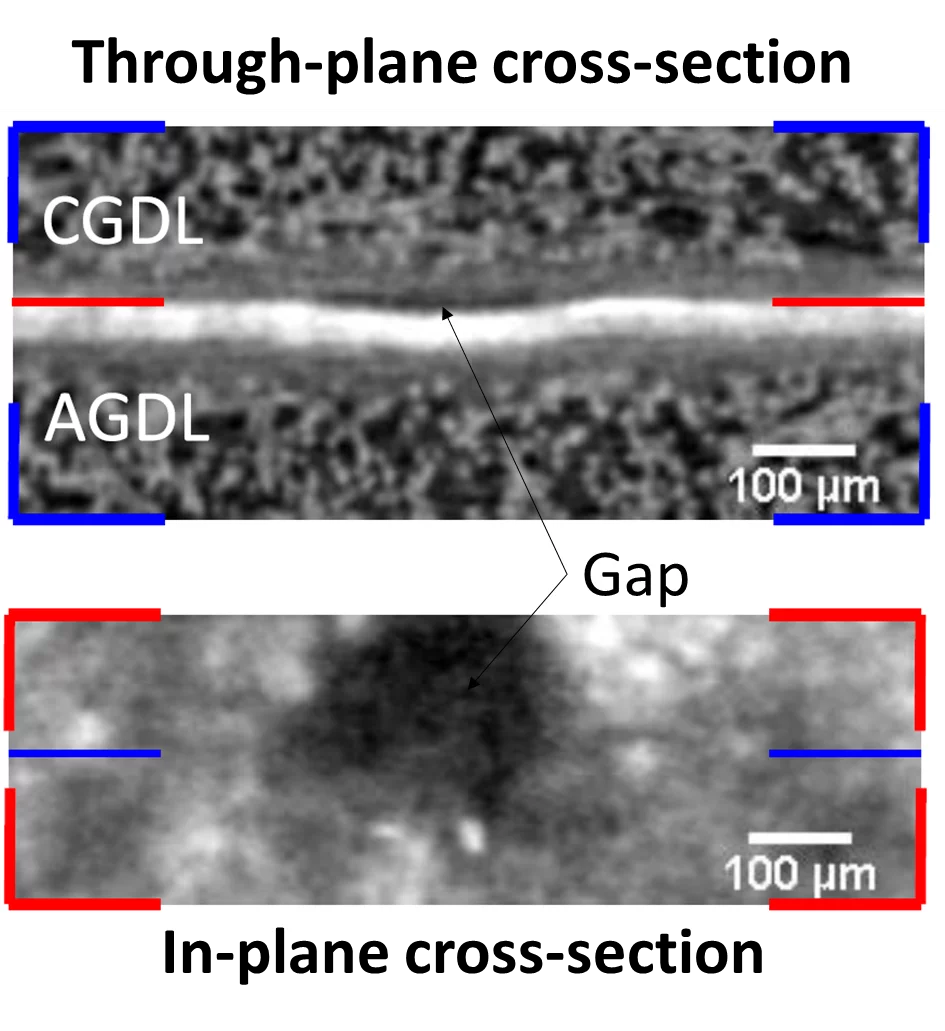Understanding the water management in polymer electrolyte fuel cells (PEFCs) during sub-zero operation is crucial for designing effective freeze start strategies. In collaboration with Toyota Motor Europe sub-second X-ray tomographic microscopy was used to study the water distributions in the gas diffusion layer (GDL) of PEFCs during dynamic freeze starts from −30 °C that mimic automotive freeze start conditions at different pre-drying levels and varying the feed gas humidity.
Proper drying of PEFCs before shutdown and freeze has significant influence on freeze start performance. The operando tomographic imaging at the TOMCAT beamline of the Swiss Light Source (SLS) at PSI revealed that no additional water formed in the GDL between -30°C and 0°C independent of the of the pre-drying level. Mechanical machining of the microporous layer (MPL) enabled to verified the existence of super-cooled liquid water at the interface between the catalyst layer and the MPL/GDL at intermediate humidity conditions, which cannot drain into the GDL due to the high capillary pressure barrier of the hydrophobic MPL with sub-micrometer pores. The formation of temporary gaps between the catalyst layer and the MPL was observed between −20 to 18 ◦C due to the hygro-mechanical stresses caused by water uptake in the cell’s membrane during the sub-zero operation and helps to explain fuel cell degradation during freeze-thaw-cycles (see Figure 1). Overall, the insights will guide material development to reduce water saturation in the CL for improved freeze-start performance and to increase lifetime of PEFCs.
Contact
Dr. Jens Eller
Scientist, Fuel Cell Systems and Diagnostics Group
Paul Scherrer Institut
5232 Villigen PSI
Switzerland
Telephone: +41 56 310 23 96
E-mail: jens.eller@psi.ch
Original Publications
Investigation of the transient freeze start behavior of polymer electrolyte fuel cells
Mayank Sabharwal, Felix N. Büchi, Shinya Nagashima, Federica Marone, Jens Eller
Journal of Power Sources 489, 229447 (2021)
DOI: 10.1016/j.jpowsour.2020.229447
Understanding the Effect of Feed Gas Humidity on the Freeze Start Behavior of Polymer Electrolyte Fuel Cells
Mayank Sabharwal, Margarita Charalambous, Tim Dörenkamp, Shinya Nagashima, Federica Marone, Felix N. Büchi, Jens Eller
Journal of The Electrochemical Society 168, 114512 (2021)
DOI: 10.1149/1945-7111/ac37ed

